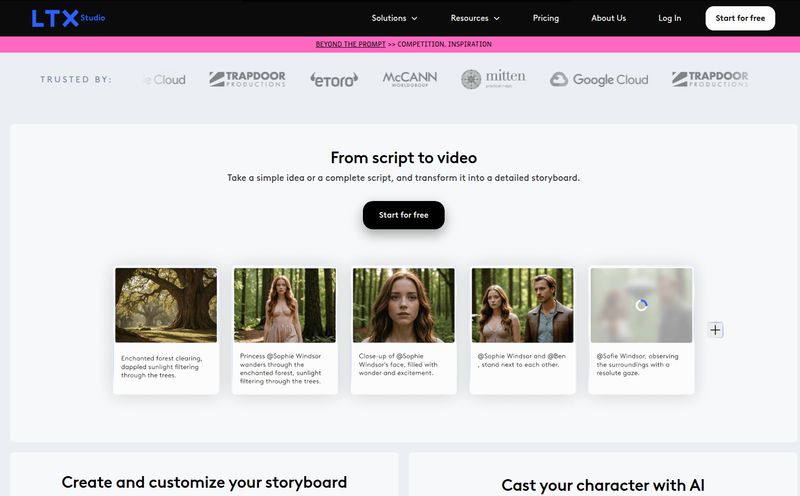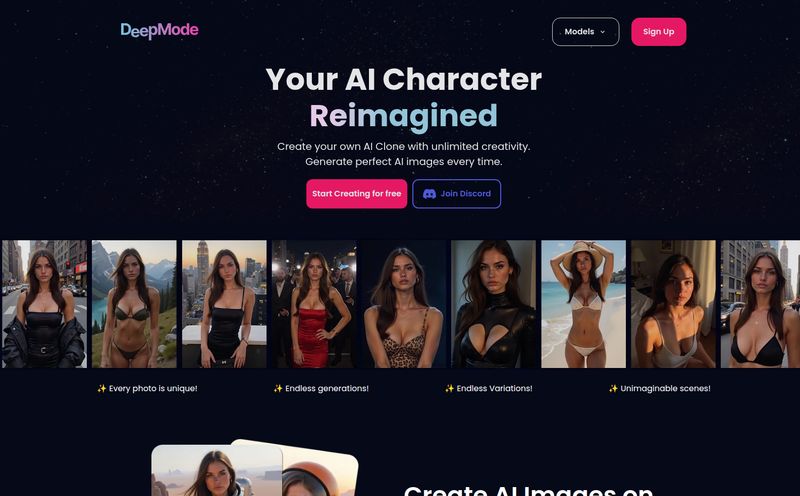As someone who’s been neck-deep in the SEO and digital trends world for years, I’ve seen my fair share of flash-in-the-pan tools. You know the ones. They burst onto the scene with a slick landing page, a revolutionary promise, and a whole lot of venture capital-fueled hype. Some stick around. Many don't.
So when I first heard whispers of CallStar, my interest was definitely piqued. The concept? An AI platform that lets you have actual voice calls with AI-powered versions of celebrities and fictional characters. Forget clunky text chats. We're talking about picking up your phone and having a conversation. Wild, right?
I imagined the possibilities. Getting business advice from a simulated Steve Jobs. Talking astrophysics with a facsimile of Carl Sagan. Or, let's be honest, just seeing if AI Tony Stark is as witty as the real deal. The idea was simple, yet brilliant. A truly new frontier for interactive entertainment and maybe even, dare I say it, companionship.
So, I did what any digital sleuth would do. I rolled up my sleeves, cracked my knuckles, and set out to find this new wonder. And what I found was... well, not what I expected.
What Was CallStar Supposed To Be Anyway?
Before we get to the mystery, let's talk about the promise. Based on the digital breadcrumbs left behind, CallStar was designed to be an AI voice call platform. You wouldn't be typing into a chat box; you'd be speaking, and an AI, mimicking the voice and personality of a chosen figure, would speak back. It's the next logical step from platforms like Character.ai, pushing past text and into the much more personal medium of voice.
Think about that for a second. The potential for traffic generation is immense. The novelty alone would create a viral loop. Everyone would want to share their hilarious or bizarre conversations. From an engagement perspective, it's a gold mine.
The Seductive Appeal of AI Conversations
Why are we so drawn to this? I've always felt it's a mix of curiosity and loneliness. We're social creatures, and the idea of on-demand conversation with a personality we admire is incredibly compelling. It’s like a video game NPC coming to life. It blurs the line between media consumption and personal interaction. This isn't just a tool; it's an experience. One that promises a unique connection, even if we know deep down it’s just a sophisticated algorithm on the other end of the line.
The Tech Behind the Curtain
The core of a platform like CallStar would rest on two pillars: a Large Language Model (LLM) for the personality and conversation, and advanced voice synthesis (or voice cloning) for the delivery. The tech for both has gotten scarily good recently. But it’s not perfect.
Some of the potential pitfalls are obvious. The AI's understanding is limited. It can misinterpret you, give weird answers, or just sound… off. That slight robotic cadence or mispronounced word that shatters the illusion. We've all heard it. And then there's the chance for it to go completely off the rails and generate inaccurate or problematic information. A real PR nightmare waiting to happen if not managed meticulously.
The Curious Case of the 404 Error
So, brimming with a mix of professional skepticism and genuine excitement, I went to the CallStar website. And I was greeted by this:

Visit CallStar
A 404 error. The digital equivalent of a disconnected phone number. A “Sorry, this page does not exist” slapped right in the face of my curiosity.
I dug a little deeper. Searched for social media profiles, press releases, anything. It’s like the platform has become a ghost. A whisper in the AI hype machine that never quite materialized. Honestly, part of me wasn't surprised. The AI space right now is the Wild West, and not every boomtown survives. It's littered with the digital skeletons of promising projects that couldn't secure that next round of funding, ran into unexpected technical hurdles, or got tangled in legal red tape.
Where Did It Go Wrong?
This is all speculation, of course, but I have a few theories. My money’s on legal issues. The ethics and legality of using a celebrity’s voice and likeness without permission are… murky at best. We've already seen high-profile cases, like the recent dust-up with Scarlett Johansson and an AI voice that sounded suspiciously like her. It's a legal minefield, and a startup might have gotten a cease-and-desist letter that shut the whole operation down before it even began.
"The speed of AI development is rapidly outpacing our legal and ethical frameworks. What's possible with technology and what's permissible in society are two very different things."
It could also have been a simple lack of funding or a tech team that promised more than they could deliver. Creating one convincing AI voice is hard. Creating a whole library of them is a monumental task.
What Would CallStar Have Cost?
This is another piece of the puzzle that's missing. There was no pricing page to be found. If it had launched, I imagine it would've followed one of a few models:
- Subscription Model: A monthly fee for a certain number of call minutes or unlimited access.
- Pay-Per-Call: A credit-based system where you buy packs of minutes.
- Freemium: A few free calls to get you hooked, then you have to pay for more.
Given the server costs associated with running these complex AI models in real-time, a free-for-all model seems unsustainable. I'd bet on a freemium or subscription plan being the most likely path.
Filling the AI Conversation Void
While CallStar seems to be an apparition for now, the idea behind it is very much alive. If you're itching to chat with an AI, you still have options, though most are text-based. Character.AI is probably the biggest name in the space, with a massive library of user-created bots. There are others, but few have dared to venture into the real-time voice call arena. It remains a tantalizing, and apparently difficult, goal.
Frequently Asked Questions about CallStar and AI Voice Calls
What exactly was CallStar?
CallStar was advertised as an AI platform that would allow users to have real-time voice conversations with AI-simulated versions of famous people and fictional characters. However, the platform appears to be offline or may have never fully launched.
Why can't I access the CallStar website?
The website currently shows a 404 error, which means the page cannot be found. This could be due to various reasons: the company may have ceased operations, they could be rebranding, or they may be experiencing technical difficulties. Its a bit of a mystery.
Is it legal to create AI voices of celebrities?
This is a complex and evolving area of law. Using someone's likeness, including their voice, without permission for commercial purposes can violate their 'right of publicity'. Many companies are facing legal challenges over this, and the law is still catching up to the technology.
Are there any good alternatives to CallStar for AI voice calls?
While the market for real-time AI voice calls with characters is still very new and sparse, there are many popular platforms for text-based AI character chat. Character.AI is the most well-known. Some platforms are beginning to integrate voice, but the seamless, conversational experience CallStar promised is still rare.
The Call That Never Connected
My investigation into CallStar ended not with a bang, but with a 404. It's a familiar story in the tech world. For every roaring success, there are a dozen quiet failures. But the dream of CallStar is a powerful one that I don’t think is going away. The desire to connect, to interact with our heroes and creations in a more personal way, is a fundamental human one.
Someone else will undoubtedly pick up this torch. The technology will get better, the legal questions will (hopefully) get clearer, and one day, we might just be able to call up our favorite characters. For now, CallStar remains a fascinating ghost in the machine—a glimpse of a future that hasn’t quite arrived yet.
References and Sources
- Character.AI - A popular platform for text-based AI character interaction.



